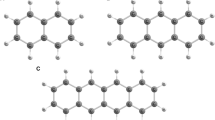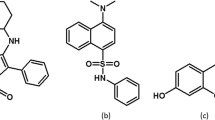Abstract
MR. GANGULY'S observations, which are in complete accord with those of several other workers on the subject1, can scarcely be said to refute the idea of energy transfers in crystals. Solid naphthacene fluoresces with its characteristic band emission, though rather faintly; when dissolved in solid anthracene it also fluoresces, as Mr. Ganguly notes, if illuminated by light which is directly absorbed by naphthacene molecules (4350–4000 A.). The vital question in the matter of energy transfer is what happens when shorter-wave light is used. If the mercury line at 3650 A. is used for excitation, the green fluorescence of naphthacene is visible in solid solutions containing only one molecule of naphthacene in 105 molecules of anthracene; at 1 in 104 this green fluorescence is strong, and above about 5 in 104 the green is brilliant while the violet anthracene fluorescence has disappeared. At 3650 A. anthracene absorbs much more strongly than naphthacene; the extinction coefficients in liquid solution are 1600 and 400 respectively, so that unless the ratio of extinction coefficients changes by a factor of about 104 in passing from solution to solid, the light must be absorbed by the anthracene molecules.
Similar content being viewed by others
Article PDF
References
For example, Dufraisse and Horclois, Bull. Soc. Chim., 1888 (1936).
Clar, Ber., 65, 503 (1932).
Franck and Teller, J. Chem. Physics, 6, 861 (1938).
Author information
Authors and Affiliations
Rights and permissions
About this article
Cite this article
BOWEN, E. Fluorescence Spectra of Naphthacene Molecules in Solid Solution of Anthracene with the Variation of Wave-lengths. Nature 153, 653 (1944). https://doi.org/10.1038/153653a0
Issue Date:
DOI: https://doi.org/10.1038/153653a0
This article is cited by
-
Fluorescence of Solid Anthracene
Nature (1947)
Comments
By submitting a comment you agree to abide by our Terms and Community Guidelines. If you find something abusive or that does not comply with our terms or guidelines please flag it as inappropriate.



